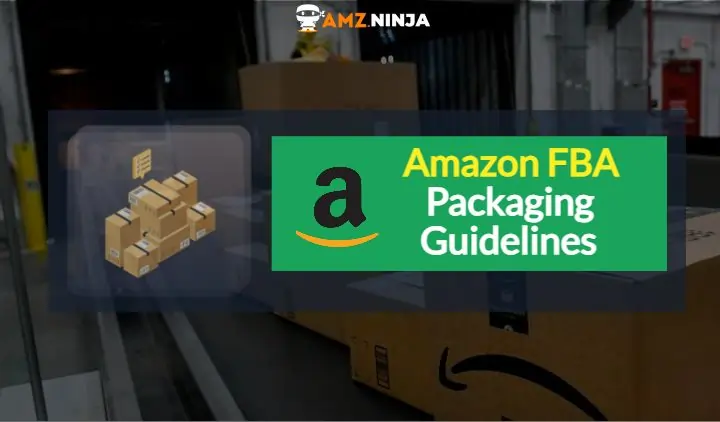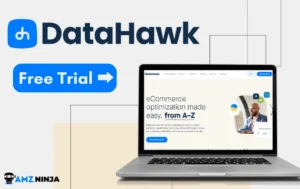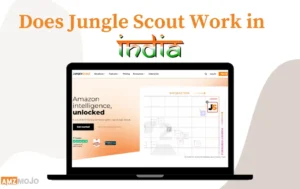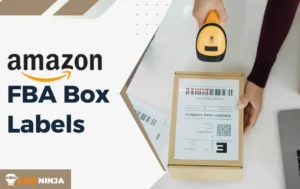
From barcodes and box dimensions to poly bags and prep guidelines, there's a lot to consider when preparing your inventory for Amazon's fulfillment centers. But what are these Amazon FBA packaging requirements you can't underestimate?
Do focusing on this parameter alone can help you become a bit more profitable? YES!
This one factor of Amazon's FBA packaging requirement can help you in cost-cutting to a great extent. When it comes to the storage and Amazon warehouses, even a difference of a few inches and grams can result in paying more charges to the Amazon FBA fees.
Well, as an Amazon seller myself, I consider that mastering this small but crucial attribute of Amazon FBA packaging requirements is a must to keep things running smoothly and make your customers happy.
Let's break down why packaging compliance and labeling are so important.
Why Amazon FBA Packaging Requirements Matter❓
Either it's FBA (Fulfilled by Amazon) or FBM (Fulfilled by Merchant), sticking to Amazon's packaging rules is key to getting your products delivered safely. Following these standards helps avoid issues like damage during shipping, misidentification, and processing delays.
Messing up on Amazon FBA product prep can lead to some serious headaches, like:
These problems show why it's crucial to follow the Fulfilled by Amazon guidelines to keep your business running smoothly.
Labeling
Proper labeling is a big deal in the Amazon FBA game. FBA sellers need to follow specific label rules to make sure products are correctly identified at Amazon's fulfillment centers.
Here are the main label types:
For a stickerless commingled inventory, you can use UPCs, ISBNs, or EANs. For labeled or stickered inventory, FNSKU labels are a must. Knowing the difference is key for keeping track of your stock.
Label Placement Tips:
| Label Type | Usage |
|---|---|
| UPC | Stickerless Commingled Inventory |
| ISBN | Stickerless Commingled Inventory |
| EAN | Stickerless Commingled Inventory |
| FNSKU | Labeled or Stickered Inventory |
👉 For more details on starting your journey on Amazon, check out our guide on Amazon dropshipping.
Following Amazon's packaging and labeling rules can save you from a lot of trouble, making sure your inventory gets to customers without a hitch.
Amazon FBA Packaging Guidelines

Getting your products ready for Amazon FBA can feel like a maze, but stick with these rules, and you'll dodge delays, extra fees, and any nasty surprises. Here's the lowdown on what you need to know for shipping boxes and product packaging.
1. Shipping Box Rules
Amazon's got some strict rules for shipping boxes to keep everything running smoothly.
| Specification | Requirement |
|---|---|
| Max Box Size | 25 inches on any side |
| Max Box Weight | 50 lbs |
2. Product Packaging Rules
Properly packaging each product is key to keeping them safe and meeting Amazon's standards. Here's what you need to know:
| Packaging Type | Requirement |
|---|---|
| Labeling | Scannable barcode, FNSKU, item name, condition |
| Boxed Units | Six sides must pass a 3-foot drop test if perforated |
| Polybags | Clear, suffocation warning, securely sealed |
Stick to these rules, and you'll avoid the headache of rejected inventory and keep your fulfillment process smooth.
Safety and Hazardous Materials

When dealing with Amazon FBA packaging requirements, keeping products safe, especially hazardous ones, is a big deal. This part covers how to handle dangerous items and the rules for see-through packaging.
1. Handling Hazardous Items
Hazardous materials come with extra rules for packaging. These rules include proper labeling, paperwork, and meeting safety standards for handling and shipping these products. Amazon is strict about these guidelines to avoid accidents and ensure hazardous items get delivered safely.
Key requirements for packaging hazardous materials include:
| Hazardous Material Requirement | Description |
|---|---|
| Proper Labeling | Hazard symbols and handling instructions |
| Documentation | Safety data sheets included |
| Safety Standards | Spill-proof containers, secure seals |
2. Transparent Packaging Requirements
Amazon FBA has specific rules for see-through packaging, especially for products that need protection from leaks, spills, dust, or separation during shipment. Poly bags are often used for this and must meet several criteria.
Poly bags used for Amazon FBA must:
| Poly Bag Requirement | Description |
|---|---|
| Suffocation Warning Label | Required for openings 5 inches or larger |
| Print Size Requirements | Based on bag's width |
| Minimum Thickness | 1.5mm |
| Transparency | Fully transparent |
| Scannable Barcode/Label | Required |
| Secure Sealing | Mandatory |
| Size Limitation | Not extend over 3 inches beyond product dimensions |
Following these guidelines ensures you meet Amazon's packaging standards and keep products safe during transit.
Shipping and Logistics

Shipping with Amazon FBA can feel like a maze, but cracking the code is key to getting your products to customers without a hitch. Let's break down the basics of shipping to Amazon and what you need to know about pallets.
1. Inbound Shipping Instructions
First things first, when you're sending stuff to an Amazon warehouse, you gotta tell Amazon what's coming, how much of it, and how it's packed. You do this through Seller Central, Amazon's seller hub. There are three main ways to ship:
Each method has its own rules:
| Shipping Method | Description | When to Use |
|---|---|---|
| Small Parcel Delivery (SPD) | Individual boxes shipped via UPS or FedEx | For smaller shipments |
| Less Than Truckload (LTL) | Multiple boxes on pallets, shipped via freight carriers | For medium-sized shipments over 150 lbs or with 20+ boxes |
| Full Truckload (FTL) | Entire truck space occupied by the shipment | For big shipments over 15,000 lbs or filling the whole truck |
For more details, check out our Amazon FBA shipping guide.
2. Pallet Requirements
If your shipment is over 150 pounds, has more than 20 boxes, or fills a truck, you need pallets. Amazon has specific rules for pallets to keep things running smoothly:
| Shipping Method | Pallet Requirements |
|---|---|
| Less Than Truckload (LTL) | Up to 10 pallets, no longer than 12 feet, max 5,000 boxes per pallet |
| Full Truckload (FTL) | Up to 26 pallets, fills the truck, usually over 15,000 lbs |
Pallet rules can change depending on where your stuff is going. Make sure your pallets meet the material, grade, and size requirements of the destination warehouse. Common specs include:
Sticking to these rules helps avoid delays and extra fees. For more on pallet guidelines, visit Amazon FBA requirements. By following these shipping instructions and pallet rules, you can make your FBA process smoother and keep Amazon happy.
Common Queries Related to Amazon FBA Packaging Requirements
What are the Basic Amazon FBA Packaging Requirements?
Products must have scannable barcodes, be properly labeled, use sturdy boxes, and follow size/weight limits. Specific guidelines apply to different product types and packaging materials.
What's the Maximum Box Size for Amazon FBA Shipments?
The maximum box size is 25 inches on any side and 50 pounds in weight unless shipping a single oversized item that exceeds these dimensions.
Do I Need to Use Amazon-branded Packaging Materials?
No, you can use your own packaging materials as long as they meet Amazon's requirements for durability, size, and labeling.
What Packing Materials are Prohibited for Amazon FBA?
Prohibited materials include packing peanuts, shredded paper, and crinkle paper. Use approved materials like bubble wrap, air pillows, or foam sheets instead.
What are the Requirements for FNSKU Labels?
FNSKU labels should be 1-2 inches tall and 2-3 inches wide, printed clearly with scannable barcodes. Place them on a flat surface of the packaging.
What Happens if I Don't Follow Amazon's Packaging Requirements?
Amazon may reject your shipment, return inventory, or charge additional fees. Repeated violations could result in restrictions on your ability to ship to FBA.
Smash Your Amazon FBA Goals
Mastering Amazon FBA packaging requirements might seem daunting at first, but it's an important step in your ecom journey. Following these guidelines, not just tick boxes on the list of prerequisites – but setting yourself up for smoother operations, happier customers, and ultimately, greater success on the Amazon platform.
Proper packaging isn't just about meeting Amazon's rules; but about protecting your products, streamlining the fulfillment process, and presenting your brand professionally. As you implement these requirements, you'll likely find your tricks and best practices along the way.
With attention to detail and a commitment to quality, you'll be all set to smash those Amazon FBA requirements.







